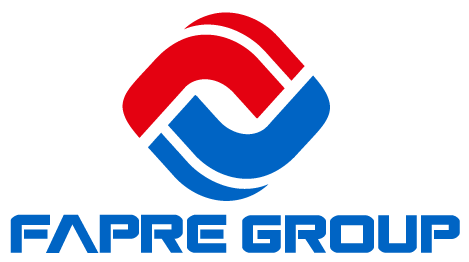NEWS CENTER
Mining conveyor belts play a crucial role in the mining industry, facilitating the extraction, transportation, and processing of ores. Whether in open-pit or underground mines, conveyor belt systems significantly improve production efficiency, reduce labor intensity, and lower transportation costs. Due to their high efficiency and durability, mining conveyor belts have become an indispensable part of modern mining operations.
1. Types of Mining Conveyor Belts
Mining conveyor belts can be classified into several types according to the specific needs of mining operations. The main types include standard conveyor belts, heat-resistant belts, cold-resistant belts, acid and alkali-resistant belts, and wear-resistant belts. Among these, wear-resistant belts are the most commonly used in the mining industry because they are subjected to intense impact and friction during ore transportation, making wear resistance a key factor in determining the belt's service life.
2. Materials and Structure of Mining Conveyor Belts
Mining conveyor belts are typically made from rubber, reinforced with layers of synthetic fibers or steel cords to enhance strength and durability. The rubber layer effectively resists external corrosion and wear, while the internal reinforcing materials ensure that the belt remains stable without deforming under heavy loads.
These belts usually feature a multi-layer structure, with each layer serving a different function. For example, the outermost cover layer is primarily responsible for wear resistance and impact absorption, while the middle layers of fabric or steel cords provide the necessary tensile strength and fatigue resistance. The thickness, width, and tensile strength of the conveyor belt are custom-designed according to the specific conditions of the mining operation, ensuring the safety and efficiency of the conveyor system.
3. Advantages of Mining Conveyor Belts
High Wear Resistance: Made from high-quality rubber materials, mining conveyor belts offer excellent wear resistance, enduring the long-term abrasion caused by rough materials such as ores and gravel.
High Load Capacity: The steel cord or fabric reinforcement layer allows the conveyor belt to carry large amounts of ore without breaking, ensuring efficient transportation.
Resistant to Environmental Conditions: Whether exposed to extreme temperatures, cold, or humidity, mining conveyor belts maintain reliable performance, making them suitable for the harsh and variable conditions of mining environments.
Energy Efficient and Eco-Friendly: Modern mining conveyor belt systems are often designed with energy efficiency in mind, reducing energy consumption during ore transportation and minimizing environmental pollution.
4. Applications of Mining Conveyor Belts
Mining conveyor belts are widely used in the transportation of coal, iron ore, copper ore, gold ore, and various other minerals. In these operations, conveyor belts not only transport ore from the extraction point to the processing area but also facilitate efficient material transfer between different stages within the mine. By optimizing the layout of the conveyor belt system, the use of mining trucks can be minimized, significantly reducing transportation costs and energy consumption.
5. Maintenance and Care
To ensure the long-term smooth operation of mining conveyor belts, regular maintenance is essential. Periodically inspecting the belts for wear and promptly removing any accumulated ore or debris can effectively extend the belt’s lifespan. Additionally, the conveyor belts should not be overloaded during use to prevent damage to the steel cord or fabric layers.
Conclusion
Mining conveyor belts are an essential part of mining production. Their durability, efficiency, and wear resistance greatly enhance the productivity of mining operations. As technology continues to advance, future mining conveyor belts will become more intelligent and environmentally friendly, providing safer and more efficient transportation solutions for the mining industry.
